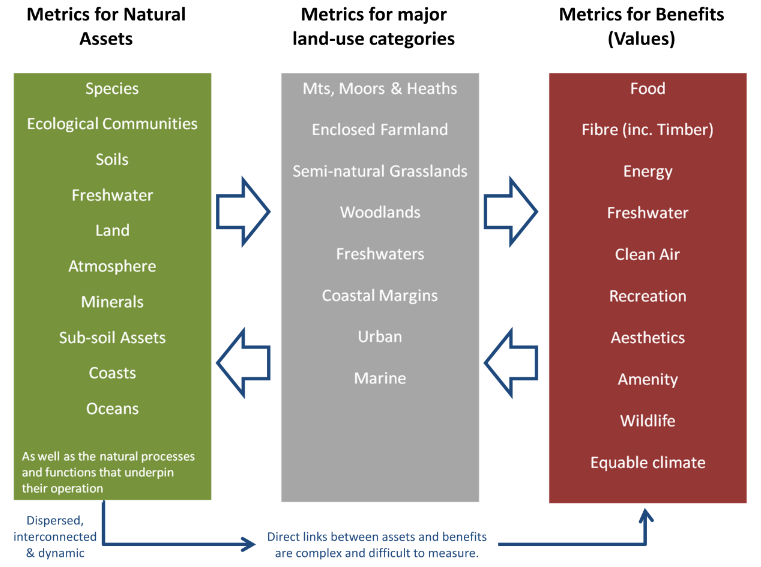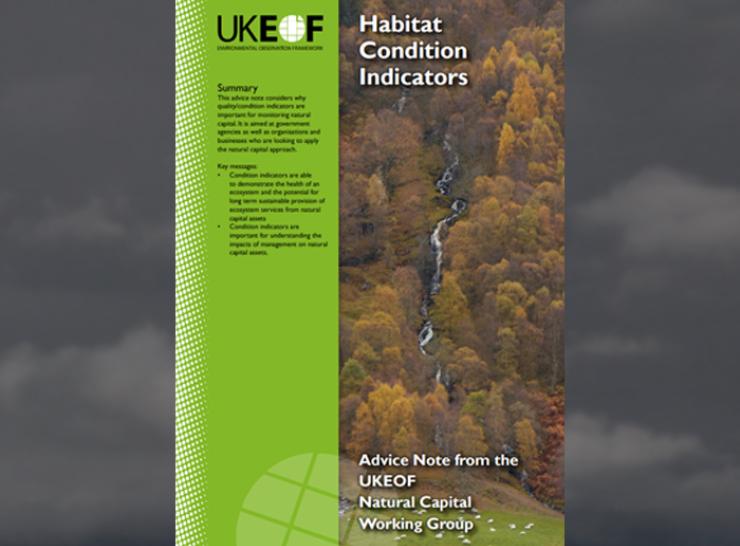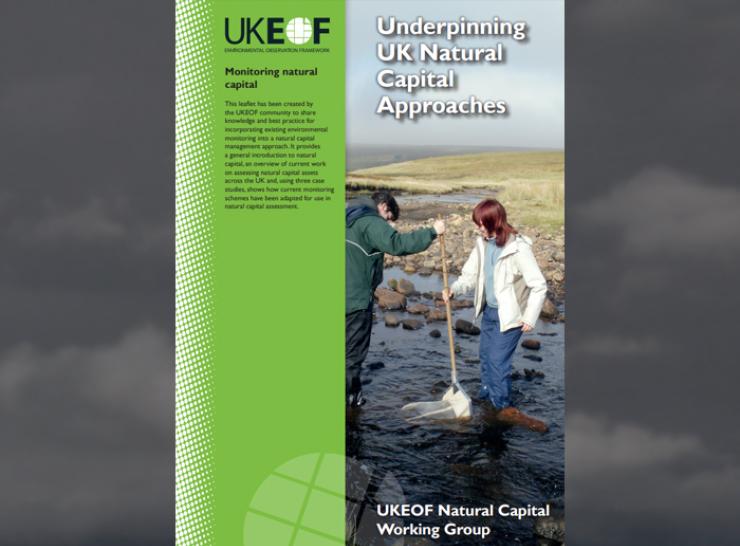- NCWG Chair: Hazel Trenbirth (ONS)
- Secretariat Lead: Lisa Norton
- Secretariat Support: Vacant
- Read about our latest activities
Natural capital assets are those aspects of the natural environment that underpin delivery of ecosystem services or benefits (see figure). In relation to natural capital metrics, UKEOF aims to identify relevant environmental observation priorities and gaps. Maintaining a healthy stock of natural capital assets is a key government objective and meeting that objective requires an effective monitoring strategy.
Although the Natural Capital Committee (NCC) suggests that for many assets we have good data about their quantity and distribution, little has been done to-date at a strategic level to optimise environmental observation for the purpose of natural capital assessment.
To address this, the UKEOF Natural Capital Working Group (NCWG) brings together relevant organisations to inform on national approaches and, where possible, align natural capital monitoring and reporting. The UKEOF partners include most of the statutory delivery and operational players who together collect and hold much of the essential data.



